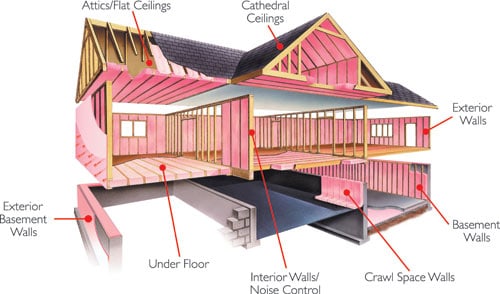What is the Hybrid Foam Installation Method
The Hybrid Foam Installation Method combines energy efficient spray foam with conventional insulation to create a lower cost alternative to using foam alone. Let us start by considering the benefits and costs of spray foam insulation vs. fiberglass insulation and other standard products such as cellulose, wool, and other 'mass' type insulation.
Foam has several benefits over fiberglass, cellulose and other standard insulation. Probably the single most important benefit is its air sealing capabilities. Thin fiberglass insulated foam panels do little to stop air leakage, it merely filters the air as it passes through. Other benefits of foam include: higher R-Value per inch, ability to conform to non-standard sizes and spaces, and it is generally easier to install.
Standard Insulation has only one main benefit over spray foam: it is much cheaper!
The Hybrid Installation takes advantage of benefits of both products. By combining a layer of foam with conventional insulation we can achieve an extremely effective and air tight insulation system at a relatively low cost.
Installation:
Installation is fairly straight forward.
- Prepare the wall assembly as normal.
- Spray in a 1/2" (warmer climates) up to 2" (colder climates) thick layer of spray foam. Be sure to cover the corners and any seams of the exterior sheathing. One Foam Insulation Spray kit will cover roughly 1,200 sq ft at a thickness of 0.5 inches. Check your climate zone for recommended thickness.
- Once the foam has cured, fill up the remainder of the cavity with conventional batting insulation or our lower cost Open-Cell spray foam kits. If you spray more then 0.5" thick layer of foam and are planning on using standard insulation batting, you may need to remove a thin layer of insulation from the batt prior to installation. Compressing fiberglass insulation batting can reduce its actual R-Value.

Don't forget to seal your bottom plate to the floor. This makes sense energy wise, not to mention it is now required by most building codes. Our Single Component Spray Foam Sealants work well for this job.
If you specifically don't want to use any fiberglass or blown insulation, you might consider our foam panel hybrid system. The EPS panels fill the bulk of the cavity and sprayed insulation is used to seal around and hold the blocks of foam in place.





